NIL
K
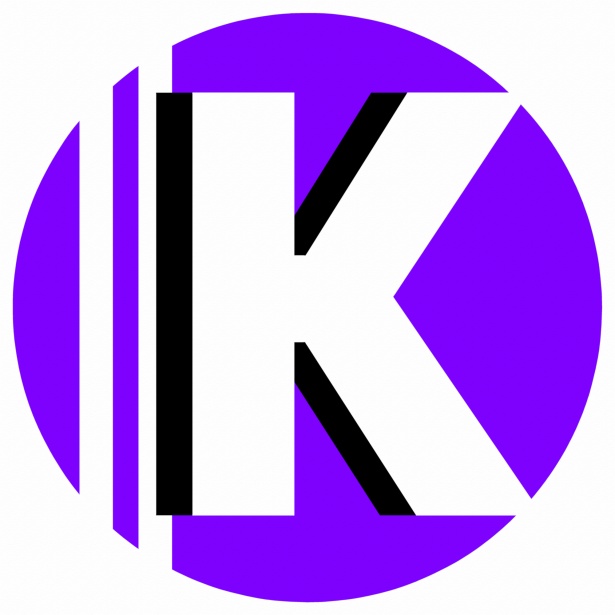


BREMERTON, Wash. – Following a second-round score of 4-over par 292 – the sixth-best total among the 14-team field on Tuesday – the Kansas State men’s golf team remains in the hunt for a top-five finish at the 2025 NCAA Bremerton Regional held the par-72, 7,167-yard Olympic Course at Gold Mountain Golf Club.
The Wildcats are vying for a finish in the top five to advance to the first NCAA Championship in program history. They hold a 36-hole score of 6-over par 582 to reside in fifth place. There are six teams within 10 shots of each other that are battling for the final three spots to qualify for the championship.
“Today was a bit of a grind,” head coach Grant Robbins said of a course that has played nearly four shots over par per player over the first two rounds. “We kind of gave away a few shots on our first nine, but they did a great job of battling all day to keep us in contention. We are right where we want to be going into tomorrow. We know our good golf is good enough. It is a matter of going out, staying committed to our game plan, playing our game and seeing what happens.”
Behind team leaders Florida and Arizona State – which are at 25-under par and 16-under par, respectively – South Carolina is in third place at 2-under par 574, and Colorado in fourth place and five shots ahead of the Wildcats at 1-over par 577.
Right behind K-State is Charlotte at 7-over par 583, while South Florida and Utah are tied for seventh place at 8-over par 584.
K-State was led on Tuesday by senior Kobe Valociek, who recorded a round of 1-under par 71. He was able to neutralize four bogeys on the day with three birdies in addition to an eagle on the par-5 6th hole. A former transfer from Virginia Tech, Valociek tied his best score in five career regional rounds with the 71 he produced during the final round of the 2024 NCAA Austin Regional, which ended up being his final 18 holes as a Hokie.
A native of Peoria, Arizona, Valociek improved 11 spots on the leaderboard during the second round, and he enters Wednesday’s final 18 holes in a tie for 21st place at 1-over par 145.
Senior Cooper Schultz remains in the top 10 following a round of even-par 72 on Tuesday, which included a trio of birdies. The Andover, Kansas, native is in a three-way tie for sixth place at 4-under par 140, just two shots back of a three-way tie for third place.
Another senior, Ian McCrary, is tied for 35th place at 4-over par 148 after an up-and-down second round of 4-over par 76 on Tuesday that included five birdies.
Nicklaus Mason battled to a round of 3-over par 75 as he countered six bogeys with birdies on his first hole – No. 10 – and two of his final three holes. The senior from Shawnee, Kansas, enters the final round tied for 48th place with a 36-hole score of 7-over par 151.
Freshman Erik Sabelström Holmberg shaved six shots off his first-round score by tallying a 2-over par 74 on Tuesday. The Stockholm, Sweden, native is tied for 63rd place at 10-over par 154.
Kansas State ranks fourth in the field in both par-3 (9-over par) and par-4 (12-over par) scoring, while they are sixth in total birdies (34) and seventh in both pars (103) and fewest bogeys (37).
A pair of Florida players reside at the top of the leaderboard as Matthew Kress is in first place at 10-under par 134, while Luke Poulter is one shot back.
The Wildcats begin the final round of the 2025 NCAA Bremerton Regional on Wednesday with tee times off No. 10 starting at 8:30 a.m. (PT) as the Wildcats are paired with Colorado and Charlotte. Live results can be followed on SCOREBOARD powered by Clippd.
NIL
ESPN’s Pete Thamel: ‘Tip-top’ of transfer portal quarterback market could reach $5 million
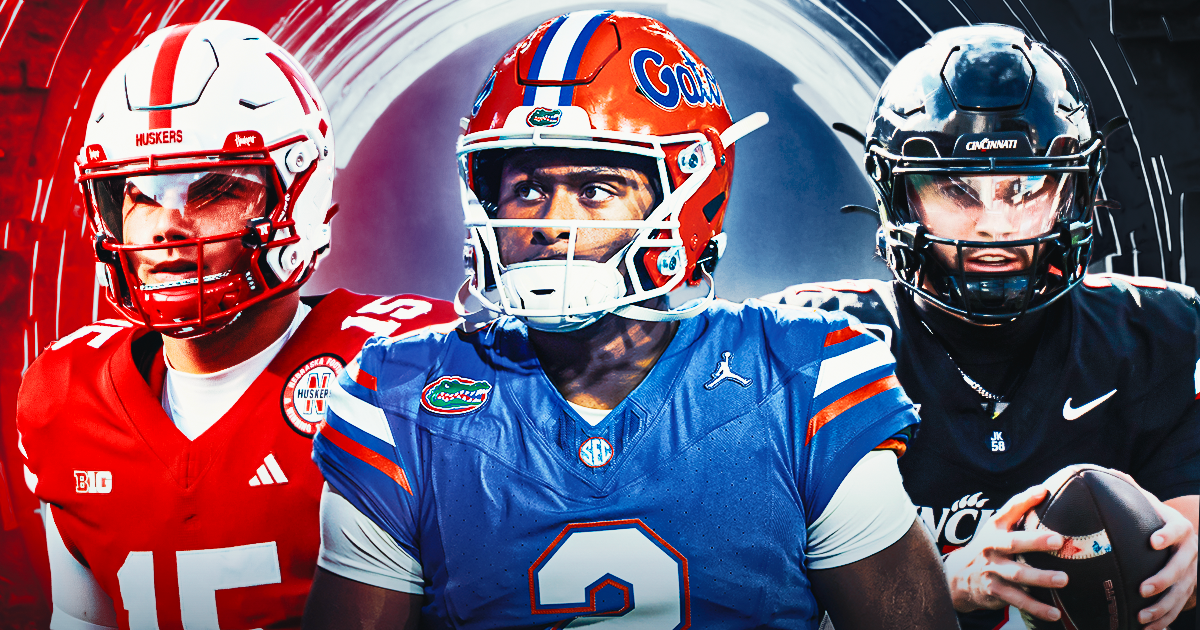
Although the transfer portal doesn’t open until Jan. 2, the quarterback market is starting to take shape. Multiple high-profile signal-callers announced their plans to hit the portal, and ESPN’s Pete Thamel reported how much the top QBs could make.
Thamel reported the “tip-top” of the quarterback market could reach $5 million. For comparison, Duke quarterback Darian Mensah was one of the highest-paid players in the country this past season at $4 million, On3’s Pete Nakos previously reported.
SUBSCRIBE to the On3 NIL and Sports Business Newsletter
Multiple big-name schools are expected to be looking for a quarterback in the portal this year, and names such as Brendan Sorsby, Dylan Raiola and Josh Hoover are already front-and-center. As a result, the market could surge, Thamel said.
“This market looks robust already, guys. … I made some calls today. Sources told me the tip-top of this quarterback market, financially, could reach $5 million for one season,” Thamel said Friday on ESPN College GameDay. “Look, it’s supply and demand. You have all those guys. Sorsby’s been linked early to Texas Tech. Dylan Raiola, there’s some smoke to Louisville, although maybe a playoff team jumps in late there. There’s been early links between Indiana and Hoover, assuming that [Fernando] Mendoza goes pro.
“Look, this is what’s going to drive the market. Oregon may lose Dante Moore, Miami’ll be in the quarterback market, so will LSU. So when you really take a look at what’s going to drive this quarterback market, it’s going to be the most expensive in the history of college football.”
Quarterback remains one of the biggest positions in the transfer portal, especially considering the recent success. Seven of the last nine Heisman Trophy winners have been transfers, including Mendoza this year. DeVonta Smith and Bryce Young are the only ones to stay with their own program at Alabama and win the award during that time.
Last year’s transfer quarterbacks were also among the highest-paid players in college football, On3 previously reported. Mensah’s $4 million payday was part of a two-year, $8 million deal at Duke. At Miami, Carson Beck inked a deal worth between $3 and $3.2 million, but up to $6 million with incentives.
The NCAA transfer portal window officially opens Jan. 2, meaning that’s when players’ names will start to appear. It will stay open for two weeks, closing Jan. 16.
NIL
College football team set to be without nearly 20 players for upcoming bowl game

The perception of bowl games and their significance to college football programs and players has undergone a rapid shift over the last decade.
In the current age of the sport, teams are turning down postseason bids while the transfer portal is filling up before most bowl games even kick off.
That’s just the reality of the situation. Normally, it’s the needy who are hit the hardest as G6 schools and poorly constructed FBS programs have their rosters raided.
Just take a look at what’s happening at UTSA.
UTSA’s Jeff Traylor: ‘I Hate What’s Going On In College Football’
Since transitioning to the FBS over a decade ago, UTSA has established itself in the Conference USA and the American Conference.
Head coach Jeff Traylor has led the program to six consecutive bowl games. That includes an up-and-down campaign in 2025, when the Roadrunners started 0-2 and won two of their final three games to finish 6-6.
UTSA is a week away from taking on FIU in the First Responder Bowl on December 26.
Going into the matchup, the Roadrunners could be without as many as 20 players. Many of those losses are due to the portal.
“We’ll be a shell of ourselves, but whoever we got out there, we’re going to go out there and play the best we can,” Traylor said, according to KENS 5’s Vinnie Vinzetta. “It’s just the numbers are so big with all the tampering. All the agents, it’s coaches too, it’s all of them. Our kids are being promised such incredible numbers, they’re getting lured into the portal.
“I just hope all the things those coaches and agents are promising they’re going to do for my kids. I hate it because I really want to coach them in a bowl game, but they’re getting leveraged out of it,” Traylor continued. “Their agents are telling them, they’ve got to not play in the bowl, they’ll get this number, they don’t play in the bowl [they’ll get this number].”
“I hate what’s going on in college football. I just think the numbers have gotten so large. You’re talking about teams that have $26 million to $40 million, and the number’s just too big, and who knows if they’re being told the truth? It’s sad, it really is sad,” Traylor added. “I never thought we’d be punished for making a bowl game by being leveraged, that if you don’t give them a certain number, they’re not going to play in a bowl.

Traylor is focused on the players still with the team, but he couldn’t help but recognize that college football looks a lot different than it did in his first season on the job.
“I’m going to celebrate the kids we have left, whoever that is, we’re going to go out there and play our tails off, and I’m very grateful for them,” Traylor said. “Again, I hate we’re talking about the 10 to 15 that probably are not going to play in the game, or 20, whatever that number ends up being. We should be talking about the 90 to 85 that are going to play with their teammates.”
“It’s like I just woke in another world as compared to where we were six years ago,” Traylor added.
Is there a way to combat what’s going on? Not really. There have been calls for coaches to report instances of tampering.
Most of the time, it’s hard for the people in charge to get the specifics of whose saying what.
“There’s no such thing as tampering. Coaches talk to players, agents talk to players,” Traylor said. “Oh, then turn them in, coach. You think those players are going to give me the coach that’s actually talking to them? Why? It’s driving the price up. The more they get driven up, the price goes up higher and higher.
“As long as there’s people gonna pay it, who’s going to stop it? What’s going to stop this? What’s going to stop it? Only the freedom of process is going to stop because when there’s no money left, what are we going to all do?”
As of December 19, four players who started multiple games for UTSA have announced plans to enter the transfer portal, including cornerbacks Davin Martin and KK Meier, defensive end Kenny Ozowalu, and defensive tackle Chidera Otutu.
More attrition is possible in the next seven days.
Read more on College Football HQ
• $45 million college football head coach reportedly offers Lane Kiffin unexpected role
• Paul Finebaum believes one SEC school is sticking by an ‘average’ head coach
• SEC football coach predicts major change after missing College Football Playoff
• Predicting landing spots for the Top 5 college football transfers (Dec. 17)
NIL
USC Trojans Leaning into New Era of College Football with Wave of Re-Signings
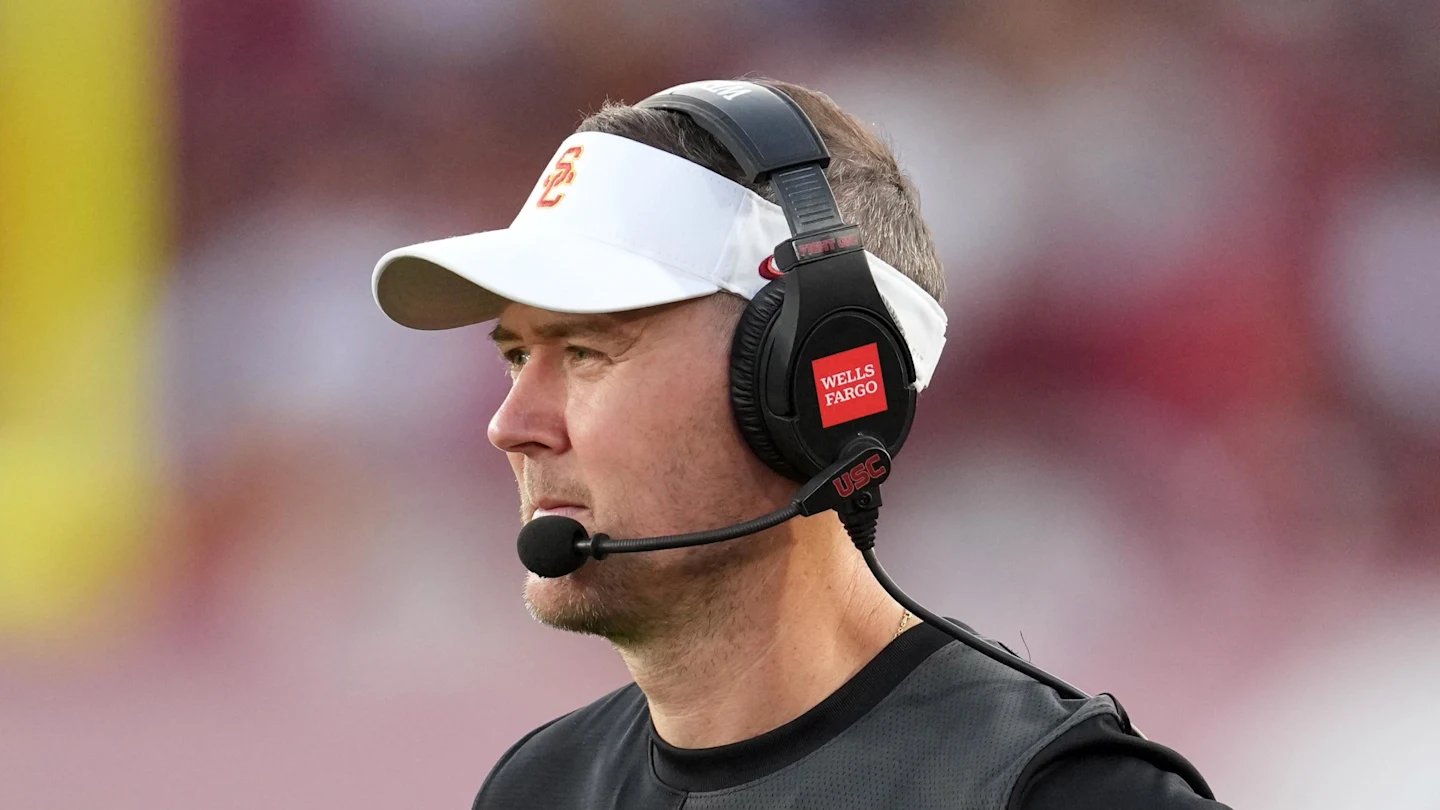
Since the introduction of name, image and likeness (NIL) in July 2021 and the transfer portal turning every offseason into free agency with no guidelines, college football has never been the same. It’s an unprecedented era but the current state of the sport.
NIL effects recruiting, it factors into a player’s decision to enter the draft or return to school and can determine whether someone decides to return to their current school or explore other options in the portal. Revenue-sharing was also instituted this summer.
It’s a battle to retain players on your own roster. The portal allows student-athletes to transfer as many as they want with no restrictions and player movement has become rampant, seven of the last nine Heisman winners were transfers.

It’s all part of the new norm of college football and the USC Trojans have embraced it. Re-signing players is nothing new, it has always been happening at the end of every semester with scholarships.
It’s the same idea with NIL and revenue-sharing, but the Trojans are just approaching it in a different way than the rest of the country and it has gone viral.
Southern Cal has been making official re-signing announcements and posting them on social media. Players are making video messages for the fans. It’s all reflective of the NFL model when a player signs an extension with their current team or sign with a different team in free agency.
Everything USC general Chad Bowden does is with purpose. In just first season with the Trojans, Bowden reeled in the No. 1 ranked recruiting class. It’s a strategic personnel and creative department in Los Angeles that could be on their way to starting a new trend in college football.
Returning Star Players

All eyes have been on what will redshirt junior quarterback Jayden Maiava do in 2026. The lure of entering the NFL Draft was tempting, especially considering it’s a particularly weak quarterback class that he could take advantage of.
Well, the re-signing of Maiava made it official that he would be returning to USC. So will the team’s two leading scorers in Waymond Jordan and King Miller. Freshman standout receiver Tanook Hines, also made his official.
Tobias Raymond’s versatility was massive for the Trojans. The local product started all 12 games at either guard or left tackle.
MORE: USC Quarterback Husan Longstreet Faces a Transfer Question
MORE: USC Faces Uncertainty As Penn State Turns Up Heat On Coach D’Anton Lynn
MORE: USC Trojans Receive Brutal Injury Update Involving Star Transfer Guard
Jahkeem Stewart arrived last winter as a highly touted five-star defensive lineman. The New Orleans native played all 11 games this season with a stress fracture in his foot. It limited his practice reps, but still, Stewart made his presence known in the Big Ten.
He is joined by starting defensive ends Kameryn Crawford and Braylan Shelby, and fellow freshman defensive lineman Floyd Boucard.
Redshirt freshman Marcelles Williams quietly became one of the top cornerbacks in the Big Ten the second half of the season. With a season under his belt and the guidance of cornerback coach Trovon Reed, sky is the limit for Williams.
Jadyn Walker started any time USC went with a 4-3 defense, rather than its traditional 4-2-5 defense. Walker will get the start in the bowl game in its traditional defense, with Eric Gentry opting out of the bowl game and is prime candidate to become a full-time starter next season.
Underrated USC Re-Signings

Redshirt freshman offensive tackle Justin Tauanuu started all 12 games this season. In a year where the Trojans had to shuffle around its offensive line on almost a weekly basis, the 6-foot-6, 315-pound Huntington Beach (Calif.) product was a constant at right tackle with Raymond playing on the left side.
Prophet Brown has missed the entirety of the 2025 season after suffering a hip injury during the second week of fall camp. Brown was projected to start at nickel and then it was freshman Alex Graham, who missed the first half of the season with an injury himself. Those injuries caused a ripple effect in the secondary.
The redshirt senior is able to use a medical redshirt. Brown dressed for practice this week for the first time since fall camp. Whether he plays is the bowl game in some capacity or not, Brown will be back in 2026.
One of the more intriguing players come this spring will be freshman cornerback RJ Sermons. The local product reclassified to the 2025 class in May and did not enroll on campus until just before the start of fall camp.

Originally the No. 1 rated cornerback in the 2026 class, Sermons spent his first season working with the Trojans staff and getting acclimated to college football. Although he didn’t take a single snap this season, USC brought Sermons with the team on every road trip he was healthy for.
Sermons will be part of a young, but incredibly talented cornerback room for Southern Cal in 2026 and a position battle that will carry well into fall camp, if not the season.
When Kamari Ramsey and Bishop Fitzgerald went down with injuries in the first half against Iowa on Nov. 15 that cost them the rest of the season, safety Kennedy Urlacher stepped into the lineup opposite of Christian Pierce.
With Ramsey primarily playing nickel this season and occasionally moving back to safety, Pierce has started almost every game this season. Now, he becomes the vocal presence on the backend of the defense.
But for Urlacher, when the injuries happened, he had not taken a defensive snap since week 2. The Notre Dame transfer played well in the second half the Trojans big time win over Iowa, and started the final two games.
Urlacher and Pierce project as the starting safeties next season. Redshirt freshman Marquis Gallegos, who also resigned, will serve as the third safety and get a head start on that competition.
Recommended Articles
NIL
Major college football program missing 26 players for bowl game
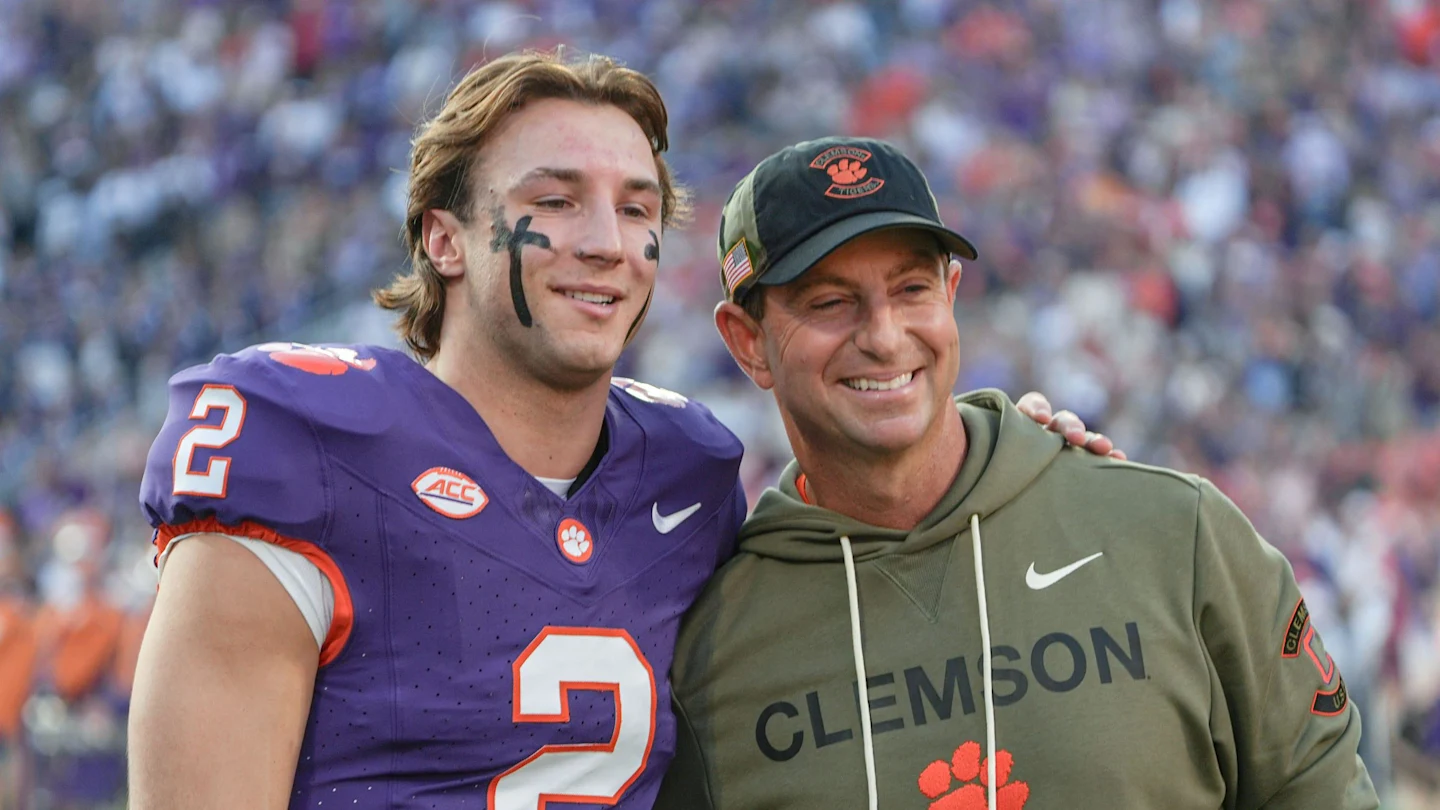
The Pinstripe Bowl was meant to serve as a bridge year moment for Clemson, a chance to reset expectations and evaluate younger talent with an eye toward 2026.
Instead, Dabo Swinney’s Monday media session revealed that 26 scholarship players won’t be available for the Tigers’ Dec. 27 Pinstripe Bowl against Penn State.
That tally, largely injuries, a cluster of transfer departures and a handful of early NFL opt-outs, compounds a season that started with top-five expectations and ended 7-5.
Swinney said 17 absences are injury-related, five players opted to transfer, and four declared for the NFL Draft; among those not playing are defensive stalwarts such as linebacker Wade Woodaz, defensive end T.J. Parker, and cornerback Avieon Terrell.
Offensively, Clemson still has quarterback Cade Klubnik, who threw for 2,750 yards and 16 touchdowns this season, but the Tigers will be without several key offensive linemen and skill-position contributors, including Antonio Williams and Bryant Wesco Jr., the team’s second- and third-leading receivers.

The 2025 campaign itself was already a disappointment by Clemson standards.
A series of close losses to LSU, Georgia Tech, and Duke left Clemson 7–5 and out of playoff contention despite opening the season ranked No. 4 in the preseason AP Top 25.
Those results eliminated any margin for error, and the loss of more than two dozen scholarship players now makes the bowl a significant test of depth.
Penn State enters at 6–6 amid a coaching transition, with roster questions of its own but fewer high-profile opt-outs reported so far.
Penn State will be coached by interim Terry Smith after James Franklin was fired midseason and later took the Virginia Tech job.
For Clemson, the situation has immediate implications for its bowl competitiveness and longer-term questions about roster depth, retention, and development.
The Pinstripe Bowl will be played at Yankee Stadium on Dec. 27 (Noon ET, ABC).
Read More at College Football HQ
- $2.1 million QB ranked as top quarterback in college football transfer portal
- $87 million college football coach predicted to accept Michigan head coaching job
- Top transfer portal QB reportedly receives ‘multiple offers’ over $4 million
- Kirby Smart sends strong message on Nick Saban before College Football Playoff
NIL
Arch Manning takes NIL pay cut to boost 2026 Texas Football roster
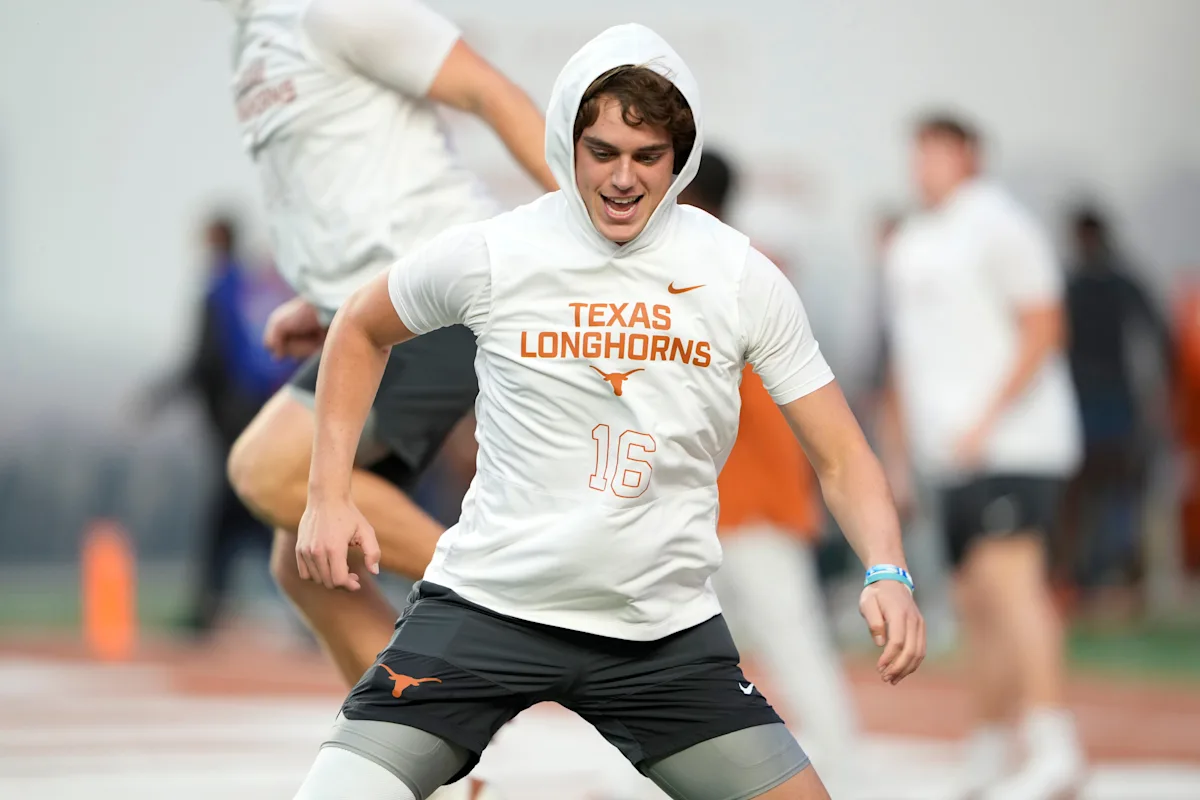
There are plenty of examples of a star in pro sports taking less money in order to help the overall roster. But it isn’t something that’s hit college football yet … until now, thanks to Arch Manning. Manning has asked to take a reduced portion of the Longhorns’ direct payout pool.
Manning’s aim at taking less NIL funds is to help improve the roster around him. Just like Patrick Mahomes, who regularly gives up millions to help the Kansas City Chief’s roster. Tom Brady did it with New England. Dirk Nowitzki, Tim Duncan, LeBron James, Kevin Durant, Jalen Brunson, Aaron Rodgers and Ben Roethlisberger have all helped the rosters around them by taking less.
Advertisement
In the pros, there are salary caps to negotiate. While college has no salary cap (yet), there is a finite amount in the NIL house pool. Texas can only spend what it has available. And while that pool is one of the biggest in the nation, Texas still follows a budget.
No doubt, Manning will be hoping the Texas coaching staff uses some of the freed up football revenue sharing funds on the offensive line. The line struggled in front of Manning all season and certainly inhibited his development early in the season.
Two offensive linemen are gone after the Citrus Bowl and Texas might lose a third. Left tackle Trevor Goosby was named first-team All-SEC is now contemplating going pro. Running back Jadan Baugh from Florida is also on Texas’ radar. The talented RB won’t be cheap.
Of course, it’s not like Manning will starve. The redshirt sophomore has one of the highest NIL valuations in nation. Manning has NIL deals with Red Bull, Panani, Uber and Warby Parker. Manning made north of $3.5 million in NIL deals in 2025, according to the Houston Chronicle.
Advertisement
With a big name that attracts major brands, Manning doesn’t need his big deals supplemented. But most college athletes are paid by the common pool of funds. Manning frees up some of that money for transfers.
This article originally appeared on Longhorns Wire: Manning Pay Cut: Texas QB asks for less NIL money to help boost roster
NIL
Top 5 transfer portal landing spots for TCU quarterback Josh Hoover
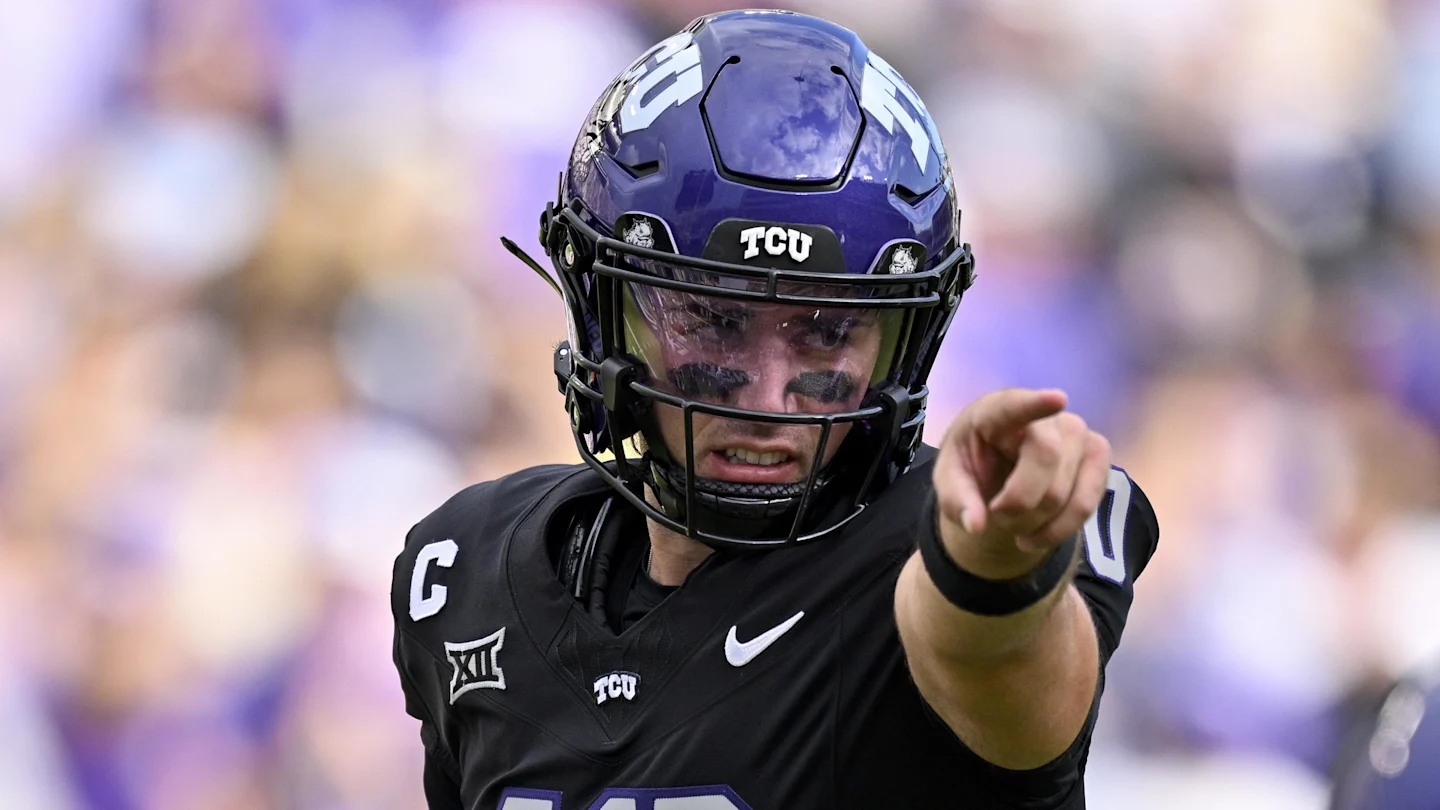
The NCAA Transfer Portal claimed another big name on Thursday night.
TCU star quarterback Josh Hoover has announced he intends to move on from the program. Hoover spent the last four seasons with the Horned Frogs, taking over as the starter midway through the 2023 campaign and putting up big numbers in each of the last two years.
In 36 career games, Hoover has completed 771/1183 passes for 9,629 yards with 71 touchdowns to 33 interceptions. He added eight more scores on the ground. There’s a very real likelihood that Hoover’s the most productive quarterback returning to the sport in 2026.
Hoover ranks in the top 5 in TCU program history in touchdown passes and total offense. He’s expected to be a coveted option in the portal.
Where are five landing spots that make sense for Hoover?
Indiana Hoosiers

Back in the College Football Playoff with a different starter for the second consecutive season, Indiana has put together one of the most impressive runs in the sport since Curt Cignetti took over the program.
The undefeated Hoosiers produced their first Heisman Trophy winner in school history last weekend as star quarterback Fernando Mendoza ran away with the award. Mendoza has another season of eligibility remaining, but is projected to be a top selection in the 2026 NFL Draft.
Indiana has already been linked to Hoover, per CBS Sports’ Chris Hummer.
Miami Hurricanes

Miami has lived in the transfer portal over the past few years, investing plenty of time and money into building a contender for Mario Cristobal. The moves finally worked out in 2025 as a massive financial commitment to secure Carson Beck from Georgia helped power the Hurricanes to the playoffs.
Though the conclusion of the 2024 season was a disappointment, former Miami quarterback Cam Ward was developed into the No. 1 pick in the most recent NFL Draft. Beck will likely get a shot at the professional level as well.
With little proven depth on the roster, it makes sense to bring in another experienced quarterback like Hoover to keep the Hurricanes on the right track. Miami has proven it’s willing to pay up.
Oregon Ducks

Oregon is a known quarterback factory, sending former stars such as Marcus Mariota and Justin Herbert to the NFL. That hasn’t changed since Dan Lanning took over the program in 2022.
The Ducks have had a quarterback drafted in back-to-back years, with Bo Nix going in the first round in 2024 and Dillon Gabriel being selected within the top-100 picks in 2025. Lanning could do it again next April with Dante Moore, who is nearing the end of a career year.
If Moore does leap to the professional level, Hoover would be a solid fit. Nix, Gabriel, and Moore all began their college careers at different schools and later transferred to Oregon, a similar path Hoover is embarking on.
Texas Tech Red Raiders

Suiting up for a playoff contender is pretty cool. Having a chance to win championships and staying home in the process might be even cooler.
Texas Tech has firmly entrenched itself as a program to reckon with in the modern age of the sport. The Red Raiders have plenty of money, and they’ve shown they’re willing to use it to pull in elite talent from the transfer portal and high school ranks.
With Behren Morton exhausting his eligibility following the playoff run, Texas Tech has to decide if it wants to turn the program over to another transfer or a homegrown talent like Will Hammond.
Either way, Hoover is from Texas and he’s already in the state.
Houston Cougars

An outlier among four other programs that have a chance to win it all, Houston is on the come-up. The Cougars haven’t been shy about writing checks, evidenced by the program signing five-star quarterback Keisean Henderson during the Early Signing Period.
Redshirt junior starter Conner Weigman does have one season of eligibility remaining and has stated he intends to return next season. Decisions are quick to change in this era, so never say never.
Would Houston bring in Hoover while Henderson develops for a season? Or should the program stick with Weigman as a veteran leader for Henderson?
Weigman just joined the program as a transfer last year. He was fine, but unspectacular this fall, and an upgrade could help the Cougars break their ceiling.
Read more on College Football HQ
• $45 million college football head coach reportedly offers Lane Kiffin unexpected role
• Paul Finebaum believes one SEC school is sticking by an ‘average’ head coach
• SEC football coach predicts major change after missing College Football Playoff
• Predicting landing spots for the Top 5 college football transfers (Dec. 17)
-

 Motorsports1 week ago
Motorsports1 week agoSoundGear Named Entitlement Sponsor of Spears CARS Tour Southwest Opener
-

 NIL3 weeks ago
NIL3 weeks agoBowl Projections: ESPN predicts 12-team College Football Playoff bracket, full bowl slate after Week 14
-

 Motorsports2 weeks ago
Motorsports2 weeks agoDonny Schatz finds new home for 2026, inks full-time deal with CJB Motorsports – InForum
-

 Rec Sports2 weeks ago
Rec Sports2 weeks agoHow Donald Trump became FIFA’s ‘soccer president’ long before World Cup draw
-
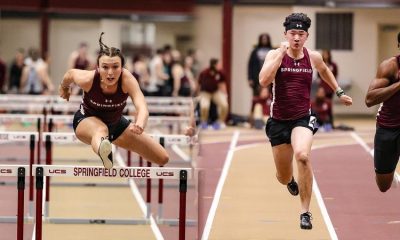
 Sports3 weeks ago
Sports3 weeks agoMen’s and Women’s Track and Field Release 2026 Indoor Schedule with Opener Slated for December 6 at Home
-
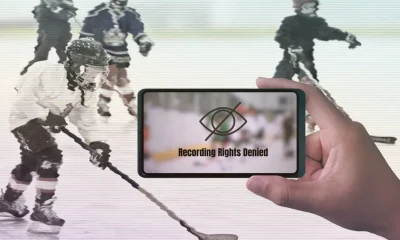
 Rec Sports2 weeks ago
Rec Sports2 weeks agoBlack Bear Revises Recording Policies After Rulebook Language Surfaces via Lever
-

 Motorsports3 weeks ago
Motorsports3 weeks agoMichael Jordan’s fight against NASCAR heads to court, could shake up motorsports
-

 Rec Sports2 weeks ago
Rec Sports2 weeks agoDavid Blitzer, Harris Blitzer Sports & Entertainment
-

 Motorsports2 weeks ago
Motorsports2 weeks agoJR Motorsports Confirms Death Of NASCAR Veteran Michael Annett At Age 39
-

 Motorsports2 weeks ago
Motorsports2 weeks agoRick Ware Racing switching to Chevrolet for 2026































